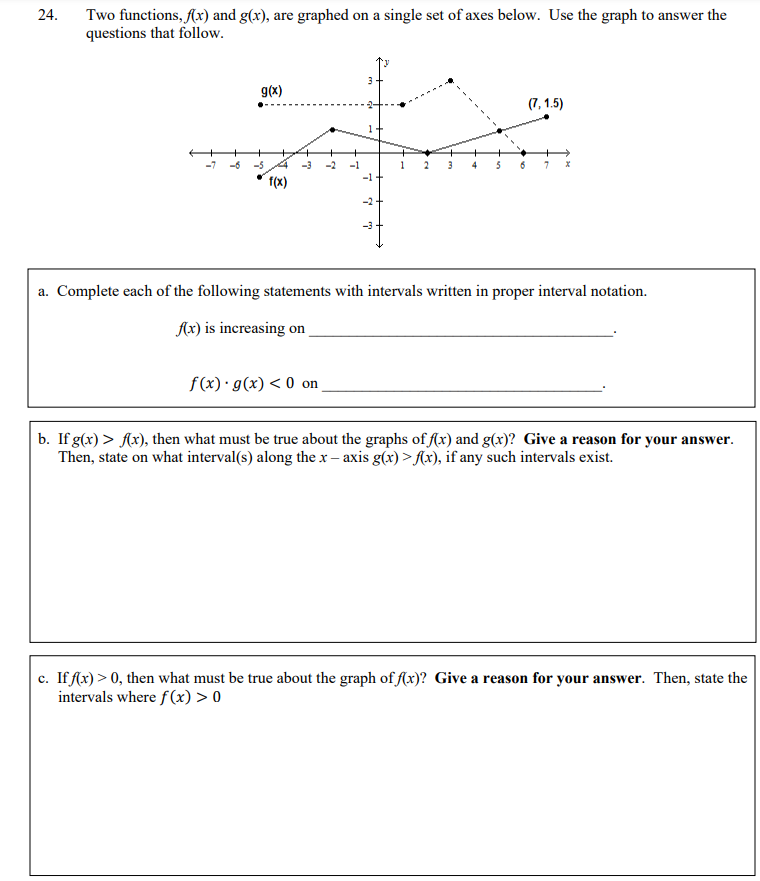24. Two functions, (x) and g(x), are graphed on a single set of axes below. Use the graph to answer the questions that follow. g(x) (7, 1.5) -7 -6 -3 1(x) -2 - a. Complete each of the following statements with intervals written in proper interval notation. Ax) is increasing on f(x)•g(x) < 0 on b. If g(x) > Ax), then what must be true about the graphs of Ax) and g(x)? Give a reason for your answer. Then, state on what interval(s) along the x – axis g(x) > Ax), if any such intervals exist. c. If f(x) > 0, then what must be true about the graph of f(x)? Give a reason for your answer. Then, state the intervals where f (x) > 0
Angles in Circles
Angles within a circle are feasible to create with the help of different properties of the circle such as radii, tangents, and chords. The radius is the distance from the center of the circle to the circumference of the circle. A tangent is a line made perpendicular to the radius through its endpoint placed on the circle as well as the line drawn at right angles to a tangent across the point of contact when the circle passes through the center of the circle. The chord is a line segment with its endpoints on the circle. A secant line or secant is the infinite extension of the chord.
Arcs in Circles
A circular arc is the arc of a circle formed by two distinct points. It is a section or segment of the circumference of a circle. A straight line passing through the center connecting the two distinct ends of the arc is termed a semi-circular arc.
see attached

Trending now
This is a popular solution!
Step by step
Solved in 3 steps with 2 images






